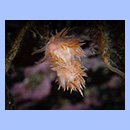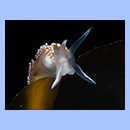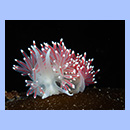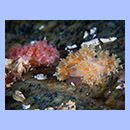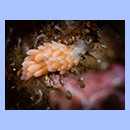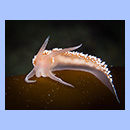The Gathering:

Some of the participants studying the catch.
The Nudibranch Safari at Gulen Dive Resort has become an annual tradition. Late winter and spring is the high season for a large number of Norwegian nudibranchs. Many species lay their eggs in this period, before they die and leave only the eggs to survive until next winter. Therefore, it is only natural that photo enthusiasts with a special interest in these little critters, gather in March to shoot'em. As previous years, biologists brought their microscopes for positive identification. We do not want to shoot the wrong guy, do we? Bernard Picton, one of the worlds experts on nudibranchs, held a lecture on the characteristics of different groups of nudibranchs.
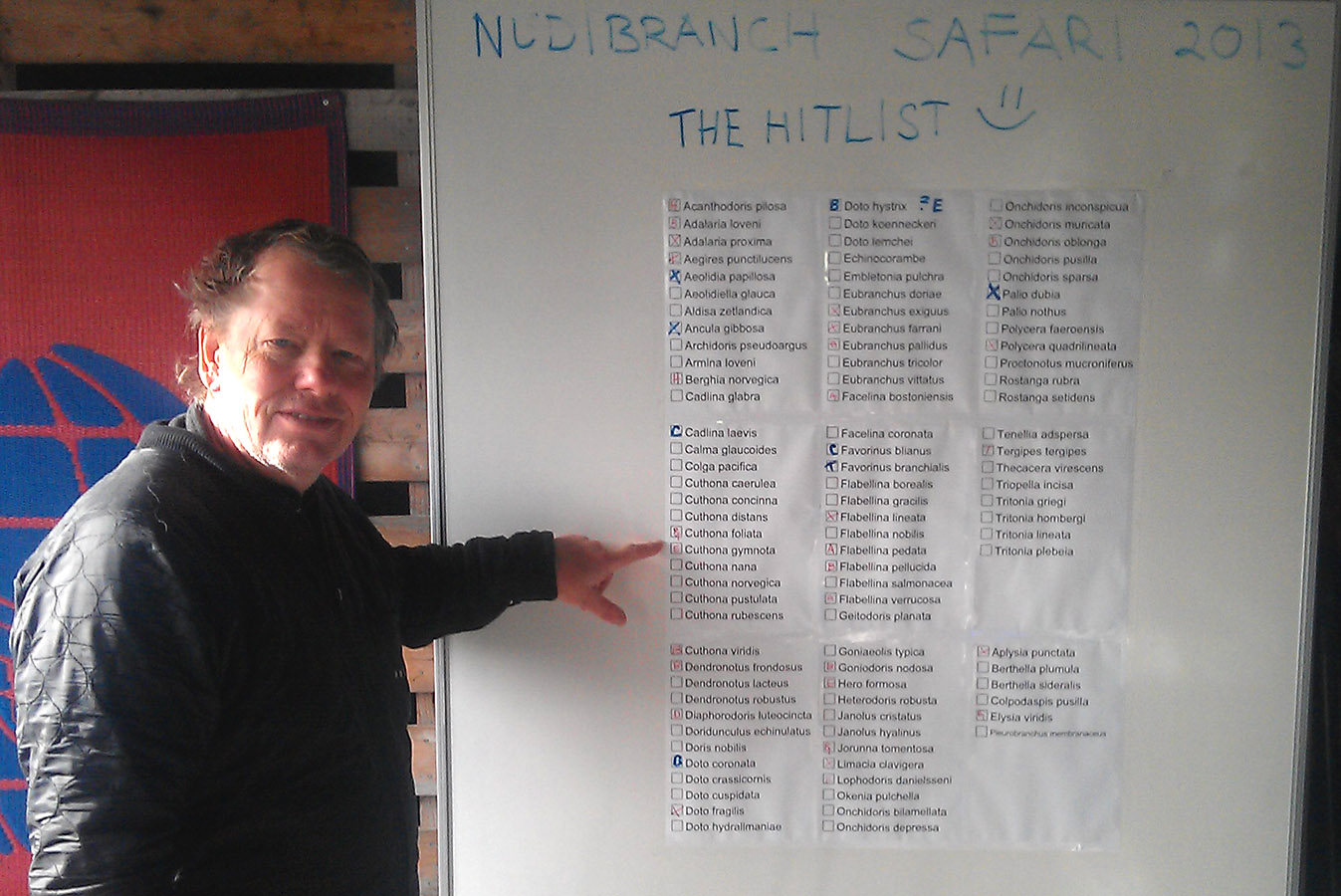
Erling Svendsen is keeping track of the species identified so far.
Alex Mustard, a professional underwater photographer, gave a lecture were he concentrated on macro photography, for obvious reasons. He gave us tips on how to improve our images by creative use of the strobes and giving more attention to what the background should look like.
Everybody were eager to test their newly gained knowledge in the water. The animal identification and photographic challenges kept us occupied for many dives on a relatively small area. In the end of the Nudibranch Safari 53 species were identified. This is impressing, knowing that there are less than 90 known species in Norway. Some specimen had to be studied further to check whether they are entirely new species, never recorded before, or simply old friends in a slightly different clothing.
The Location: Gulen Dive Resort

Gulen, at the west coast of Norway.
The Gulen Dive Resort is a very well equipped dive center. If you need nitrox for all those nudibranch dives, or trimix to visit some of the deeper wrecks in the neighborhood, the center provides both. The center's own pub is the place to socialize when the diving activities come to an end for the day. Beds and a well equipped kitchen are available if you want to stay for a while.
In the early years the wrecks were in focus for visiting divers. Frequent reports on the wide range of animal life, just outside the pier, made the owners aware of the treasure they now call their house reef. The location is sheltered from wind and waves, so there is always an opportunity to dive, regardless of the weather. This is in contrast to many other dive sites along the Norwegian coasts.
The "new" Species on seawater.no:
There is an increasing variety of marine fauna as you move southwards along the Norwegian coast. This was obvious during the dives at Gulen. After almost one thousand dives further north, I encountered five species in one weekend that I had never seen before. On the other hand, there are species abundant in the Trondheim Fjord that are rarely seen in southern parts of Norway. This should encourage divers interested in the marine fauna, to visit new locations. The five new species added to seawater.no after this weekend are:
- The Aeolid nudibranch Diaphoreolis viridis seems more abundant in southern parts of Norway. At Gulen it was quite common.
- The tiny Aegires punctilucens was not easy to spot. The specimen I found was approximately 5 mm long. I would probably not have seen it if it had not been showing off at the edge of a kelp.
- The beautiful Risso's crab was found under a rock.
- The small cactus sea squirt has a northern distribution, but I had to go south to find it.
- The two-spotted clingfish exists in Trøndelag as well, but I have not seen it before. Christian Skauge, who is more familiar in these waters, found it for me, hiding under an empty shell.
The Unidentified Species:
- This bryozoan, probably a Tubulipora, seemed very abundant at Gulen, but I have never seen it before. Any help identifying it is appreciated.
